Attock District in Punjab, Pakistan, is a place of great historic significance. Alexander the Great of Macedonia passed through it as did the first Mughal, Babar, and the various Afghan Sultans before him.
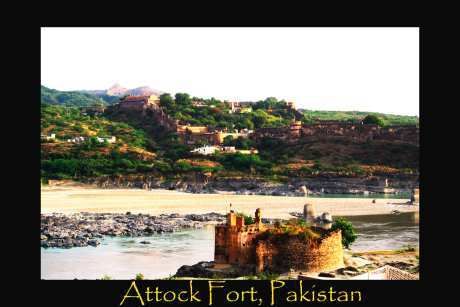
Emperor Akbar the Great, the grandson of Babar, recognizing the strategic importance of this area in 1581 built his famous Attock Fort complex here. The fall of Mughal Empire in eighteenth century saw the rise of Sikhs in Punjab and Durrani Afghans to the west. Once again Attock became a battle ground between two contending powers. British finally ended the feud by subjugating both Sikhs and Afghans in the nineteenth century. British at the same time also brought rail line to the area, built first permanent bridge in 1880 over the Indus River, and established a new city of Campbellpur. After independence of Pakistan the city was renamed as Attock City while the old city by the river is called Attock Khurd (Little Attock).So what gives Attock its historic significance and strategic importance?
The answer lies in geography. Located at the rim of the Potohar Plateau and overlooking the Kabul-Indus River confluence to the north, Attock is the historic gateway to the Central Asia.
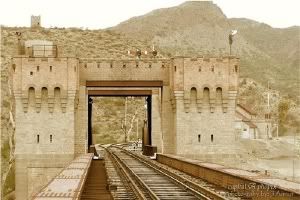 Mr. Jawahar Lal Nehru, the first Prime Minister of India is known to have said: “As soon as I cross the Attock Bridge across the Indus River I feel as if I am in Central Asia�.
Mr. Jawahar Lal Nehru, the first Prime Minister of India is known to have said: “As soon as I cross the Attock Bridge across the Indus River I feel as if I am in Central Asia�.
Indeed Attock is the eastern terminus of the Kabul-Attock corridor to the Central Asia through which for centuries have passed the armies and the caravans alike. However unlike the modern highways, this corridor is not a work of engineering marvel but an act of nature as it was naturally carved through the Hindu Kush Mountains by the legendry Kabul River and its numerous tributary rivers and streams. Traveling through the historic Kabul-Attock corridor and its adjoining valleys is in essence following the journey of the Kabul River and its tributaries.
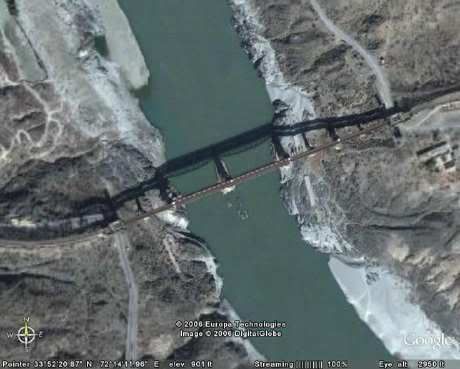
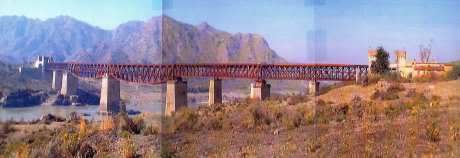
The 435 miles long journey of River Kabul starts just west of the Kabul city in Afghanistan and ends at Attock where it ultimately falls into the River Indus. The river rises in the Sanglakh Range 45 miles west of the Kabul city as a small trickling and flows east towards Jalalabad and ultimately into Pakistan. Half mile east of Kabul city it is joined by the River Logar from the south and then about 40 miles below the Kabul city joins the River Panjshir flowing down from the north. On its way to Jalalabad, Kabul River is also joined by smaller rivers like Tagao, Alingar/Alishang combined, and Surkhab. Then about two or three miles below the city of Jalalabad it is joined by the Kunar River, which first rises in Chiantar glacier in Chitral, Pakistan as River Mastuj and flows southwest into Afghanistan.
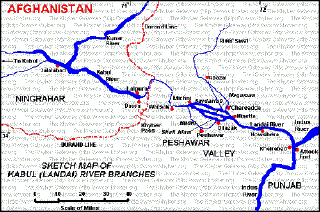 Once in Afghanistan the Kunar River gets joined by Bashgal River from Nurestan before it finally merges with Kabul River. Kunar River brings in enough waters from Chitral and Nurestan areas that a few miles below its confluence with Kabul River a hydroelectric plant is built to harness river energies. This is the first water works on River Kabul.From Jalalabad onward River Kabul cuts deep gorges through the Mahmond Hills, curves northward and approximately forms the international border between Afghanistan and Pakistan for several miles and then turns eastward again to be completely inside Pakistan just north of the legendry Khyber Pass. Ultimately in a perfect inverted U shape the river heads south towards the plains of Peshawar, the capital city of the Frontier Province of Pakistan.
Once in Afghanistan the Kunar River gets joined by Bashgal River from Nurestan before it finally merges with Kabul River. Kunar River brings in enough waters from Chitral and Nurestan areas that a few miles below its confluence with Kabul River a hydroelectric plant is built to harness river energies. This is the first water works on River Kabul.From Jalalabad onward River Kabul cuts deep gorges through the Mahmond Hills, curves northward and approximately forms the international border between Afghanistan and Pakistan for several miles and then turns eastward again to be completely inside Pakistan just north of the legendry Khyber Pass. Ultimately in a perfect inverted U shape the river heads south towards the plains of Peshawar, the capital city of the Frontier Province of Pakistan.
Now this is the route through the Kabul River Valley, that armies of Alexander the Great and other invaders from Central Asia after him took to reach down to the plains of Peshawar.
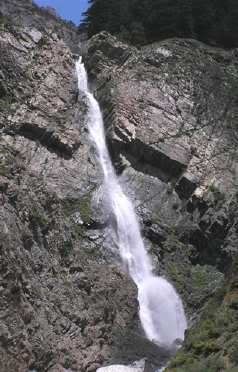 These days, since 1945, the Upper Kabul River Valley in Afghanistan is occupied by the modern Kabul-Jalalabad-Peshawar Highway. However the highway does not completely follow the ancient route and instead, from Jalalabad onward it zigzags over the mountains and reaches Peshawar via Torkham and Landi Kotal through the legendry Khyber Pass. There is not much vehicle traffic through the river gorge; however the river itself is navigable by flat bottom boats or rafts and is considerably used for two-way commerce between Afghanistan and Pakistan. The gorge is narrow and deep and could easily lend itself as a site for a hydroelectric project but unfortunately neither one of the two countries has considered any such project yet.
These days, since 1945, the Upper Kabul River Valley in Afghanistan is occupied by the modern Kabul-Jalalabad-Peshawar Highway. However the highway does not completely follow the ancient route and instead, from Jalalabad onward it zigzags over the mountains and reaches Peshawar via Torkham and Landi Kotal through the legendry Khyber Pass. There is not much vehicle traffic through the river gorge; however the river itself is navigable by flat bottom boats or rafts and is considerably used for two-way commerce between Afghanistan and Pakistan. The gorge is narrow and deep and could easily lend itself as a site for a hydroelectric project but unfortunately neither one of the two countries has considered any such project yet.
In Pakistan the first head works on Kabul River is the Warsak Dam placed near Michni Fort. From this point various canals are developed in order to irrigate Peshawar Valley; these canals have significantly contributed towards the prosperity of the Charsadda district. Bara River flowing in from the Khyber Agency in the southwest is the first tributary to the Kabul River in Pakistan. These days Kabul River Canal originating from the Warsak Dam, after joining with Bara River provides waters to the Peshawar area and then travels further east to ultimately fall back into the Kabul River near the city of Nowshera.
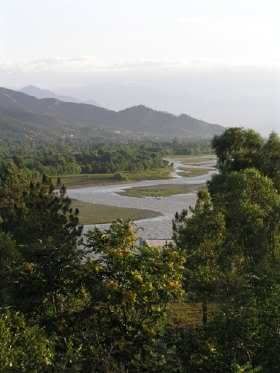 Another and a major contributor to the Kabul River in Pakistan is the Swat River. It rises in the northern Swat near the city of Kalam and after traveling southward for about 70 miles gets joined by the Panjkora River near the town of Kalan Gai in Malakand District. The Panjkora River itself, just like Swat River, rises near Shiren gai in Dir and travels south to meet its counterpart. Together these two rivers continue to travel southward as Swat River and after passing through the Mahmond Agency fall into the Kabul River near Charsadda. The total length of Swat River is about 140 miles. Saidu Sharif is the most important and a capital city along the banks of River Swat. In the historic times these river routes were used both in war and peace. However with the opening of Jalalabad-Peshawar Highway and the Karakarom Highway to the further east, these ancient river routes even though now equipped with modern highways have lost their international significance and presently are used for the local traffic only.
Another and a major contributor to the Kabul River in Pakistan is the Swat River. It rises in the northern Swat near the city of Kalam and after traveling southward for about 70 miles gets joined by the Panjkora River near the town of Kalan Gai in Malakand District. The Panjkora River itself, just like Swat River, rises near Shiren gai in Dir and travels south to meet its counterpart. Together these two rivers continue to travel southward as Swat River and after passing through the Mahmond Agency fall into the Kabul River near Charsadda. The total length of Swat River is about 140 miles. Saidu Sharif is the most important and a capital city along the banks of River Swat. In the historic times these river routes were used both in war and peace. However with the opening of Jalalabad-Peshawar Highway and the Karakarom Highway to the further east, these ancient river routes even though now equipped with modern highways have lost their international significance and presently are used for the local traffic only.
British by 1895 under the leadership of Sir Robert Low had subjugated the Yousafzai clan of Swat, established a fort near the Malakand Pass and then brought rail line from Nowshera to Dar gai. They had also connected Swat with Malakand by tunnels thus further minimizing the importance of the ancient route via Swat River. Not only that, the Swat River itself was partially diverted at Malakand hydroelectric project as some of the river waters are forced to go through three mile long man made tunnels to a fall of 350 feet.
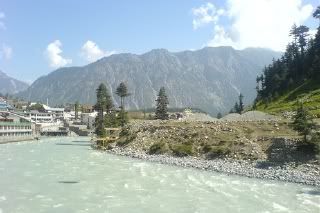 At present there are two power houses at Malakand Khas and Dar gai respectively and a third one is in the planning. At the bottom end of the tunnels the river waters are channeled through the Upper and the Lower Swat Canals. The Lower Swat Canal after passing through Mardan and Rasalpur areas falls into Kabul River near Nowshera. The Upper Swat Canal falls into the Kabul River just above the town of Jahangira named after Emperor Jahangir, the only son of Emperor Akbar. Jahangira is located on the right bank of the Indus River at its confluence with River Kabul. The rail line and the famous Grand Trunk, commonly known as G. T. Road, from Nowshera to Attock travels through the Lower Kabul River Valley along the banks of the River Kabul.
At present there are two power houses at Malakand Khas and Dar gai respectively and a third one is in the planning. At the bottom end of the tunnels the river waters are channeled through the Upper and the Lower Swat Canals. The Lower Swat Canal after passing through Mardan and Rasalpur areas falls into Kabul River near Nowshera. The Upper Swat Canal falls into the Kabul River just above the town of Jahangira named after Emperor Jahangir, the only son of Emperor Akbar. Jahangira is located on the right bank of the Indus River at its confluence with River Kabul. The rail line and the famous Grand Trunk, commonly known as G. T. Road, from Nowshera to Attock travels through the Lower Kabul River Valley along the banks of the River Kabul.
The journey of the Kabul River that starts from the Sanglakh Hills just west of the Kabul city in Afghanistan finally ends at the Indus River just north of Attock in Pakistan. The confluence area is a known sanctuary for the migratory birds flying between Siberia and Indus River delta in southern Pakistan along the Arabian Sea. The total run of the Kabul River and its tributary rivers adds up to be more than one thousand miles. All together from seven to ten significant tributary rivers and their picturesque valleys belong to the overall Kabul River system.
The thousands of square mile area of the Kabul River watershed, which is separate from the Upper Indus River watershed in Northern Areas of Pakistan, is stretched from Gazna to Panjshir Valley in northeast Afghanistan and from Khyber Agency to Chitral, Dir and Swat in northwest Pakistan. Today even though the ancient river routes of the Kabul River tributaries have lost their original significance, the new potentials for commerce, tourism industry and the river water developments are considerably significant. In the best interest of their people, the governments of neighboring Afghanistan and Pakistan need to minimize their political differences and cooperate mutually to fully realize the potentials of their joint Kabul River system stretched from Gazna to Kalam and from Kabul city to Attock City.
Pervaiz Munir Alvi is a Ravian and trained as a Civil and Geo-technical Engineer. The factual information for this essay was obtained through a research of multiple existing sources.




















































I do not understand Sawkar’s reference to some absurd taboo.
That the Marathas made their presence beyond the Indus is a historical fact and the stuff of legends. Something that had never happened in a 700 years invasions south to north. Like their anscestors the Rashtrakuts.
I am pasting a reference from a neutral source. Even though it being a bit poetic should not belittle its factuallity.
“…Such men are the direct descendants of the great Shivaji
i want to add some information that before crossing the twin brige the village name is khair abad kund which is famous deu to kund park and the boundry of attock start after crossing the bridge toward punjab side this area is attock and is part of panjab and khairabad is in frontier provence it should have its own identificationand so i request that mention this area as khair abad kund not as attock
thanks
sohail afridi
I tend to agree with Adonis. I am not a historian but love to read history with a common sensical approach. The words in Marathi assume importance for Maharashtrians because, of the taboo attached against Hindus crossing the seas. The famous purification rites of Rangler Paranjyape on his return from England, arose out of such taboo. The Hindu priests at the time of R. Peshwe told him that Attok river, too, carries the taboo. Peshwe true soldier that he was did not bother, but symbolically crossed river, planted the Maratha flag and retreated immediately without any actual control over the region.
Thank you very much moderator for editing my post and clearing the mess.
Thank you very much Adonis for your version of the events.
However I must tell you that the phrase “Atake par” (Marathi for beyond the Attock (river?) ) is very much a part of Marathi folklore and is an old metaphor for Maratha achievement as much as Panipat is used in the same sense as Waterloo, a metaphor for debacle.
I wonder why Panani the grammarian finds no mention, when a firangi invader is.
Interestingly Atak is pronunced the same in Marathi as in the local language of the place, (Punjabi?, Pushtu?)
Attock is actually in teh present day punjab but on the boundary with NWFP. River indus at this place is also called river attock.
No matter what the hindutva crowd or maratha supremists say, there is no local record of any crossing of indus by the marathas. In fact the maratha infiltration of punjab was extremely short lived, about six months and that too was confined mostly to lahore.
The marathas were invited in by Adina Baig, the governor of jallundur and managed to oust taimur shah’s small force from lahore and a small maratha sortie chased him to attock. Marathas then made Adina Baig the governor of lahore. He remained at this post for six months before Abdalis’s army ousted him and his maratha supporters from lahore.
As for chauth of punjab, it was awarded to marathas by the mughal emperor of delhi but they hardly managed to get anything because the emperor had no control over punjab at the time. Maratha invasion was so short lived that unlike sikh period, it does not get any mention in local history and collective memory of the people of pakistani punjab.